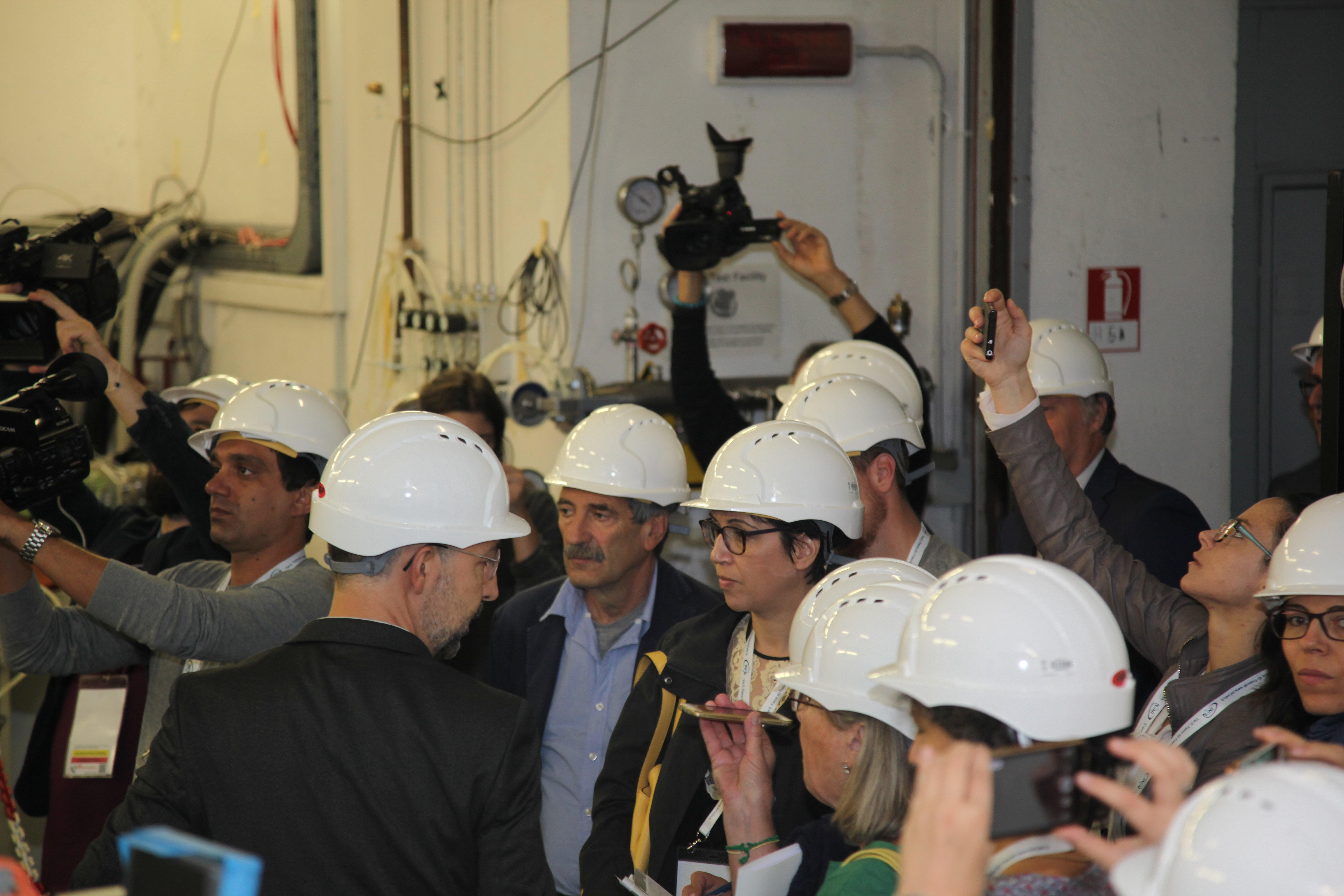 The PADME experiment data-taking officially started yesterday, 4th of October 2018, at the Beam-Test Facility of Frascati National Laboratories.
The PADME experiment data-taking officially started yesterday, 4th of October 2018, at the Beam-Test Facility of Frascati National Laboratories.
PADME (Positron Annihilation into Dark Matter Experiment) is based on a hypothesis derived from some theoretical models predicting the existence of a fifth fundamental interaction able to connect dark matter with our world and which would be added to the four fundamental forces we already know, namely the gravitational and electromagnetic interactions and the strong and weak ones. To this new fifth force, as for the other four, there would be an associated messenger particle. In this case it would be a “heavy” photon – in other words with a little mass, unlike the ordinary one, which has no mass at all – that physicists call “dark photon”.
To produce the dark photon PADME uses annihilation events between the anti-electrons (positrons) produced and accelerated by the Frascati LINAC and the electrons of a subtle synthetic diamond target (thickness of 1/10 mm), which permits monitoring intensity, size and position of the particle beam. Most of the time, the annihilation produces two ordinary photons, with an energy equal to the one of an incident beam. Whether a new particle would be produced, in this case a dark photon, the only photon detected would carry just a fraction of the total energy.
By precisely measuring the energy and position of the ordinary photon, PADME is therefore capable of determining the missing mass. To do this, it uses a calorimeter with excellent resolution in terms of energy and position, made of around 600 BGO crystals deriving from the L3 experiment at the LEP of CERN.
PADME collaboration starts a data-taking whose goal is to reach a sensitivity in the coupling of the dark photon with the ordinary one of 10-6, which requires more than 10.000 billion of positron annihilations on target produced.
Read the INFN press release
Translation by Camilla Paola Maglione, Communications Office INFN-LNF
 INFN-LNF Laboratori Nazionali di Frascati
INFN-LNF Laboratori Nazionali di Frascati